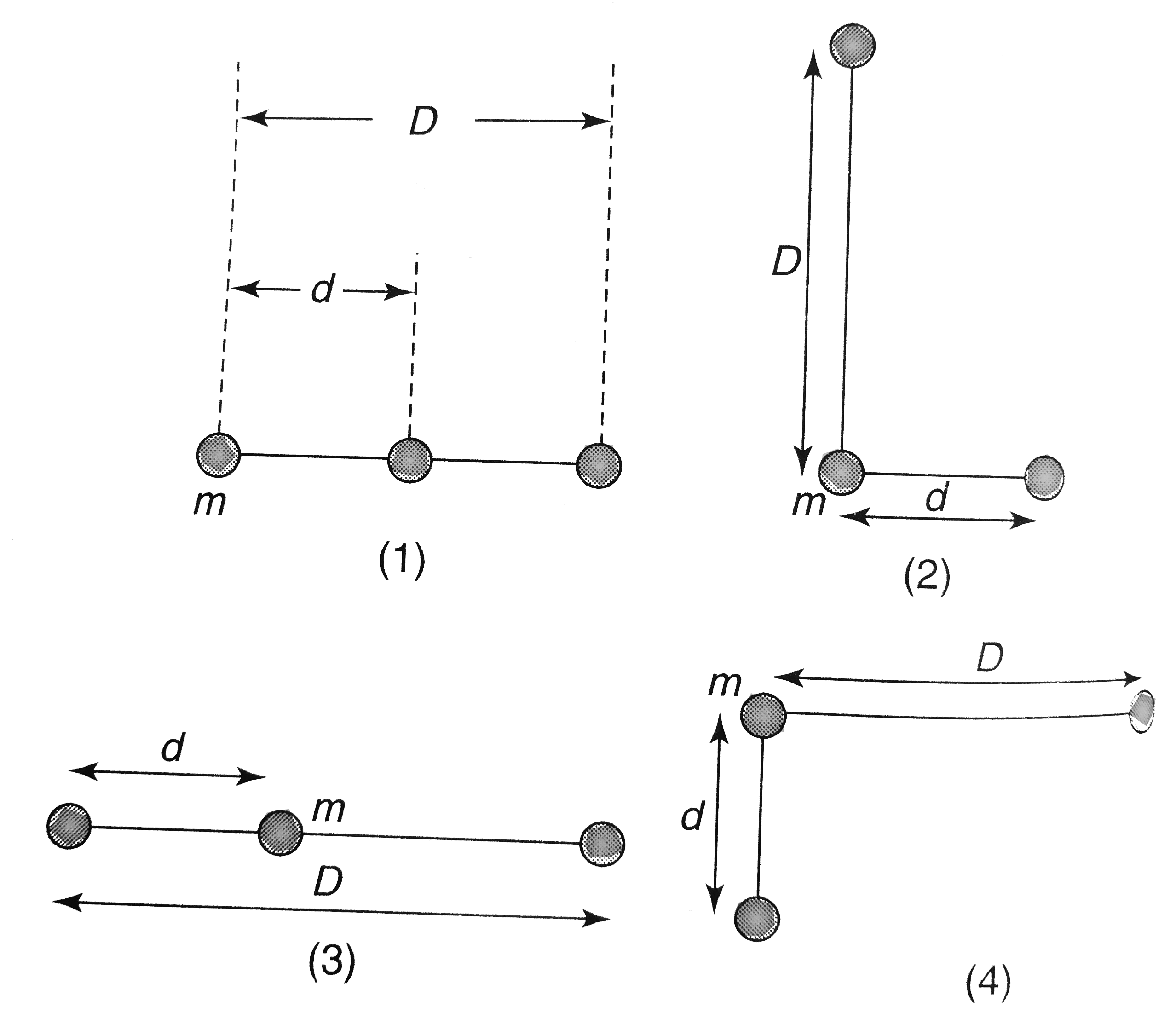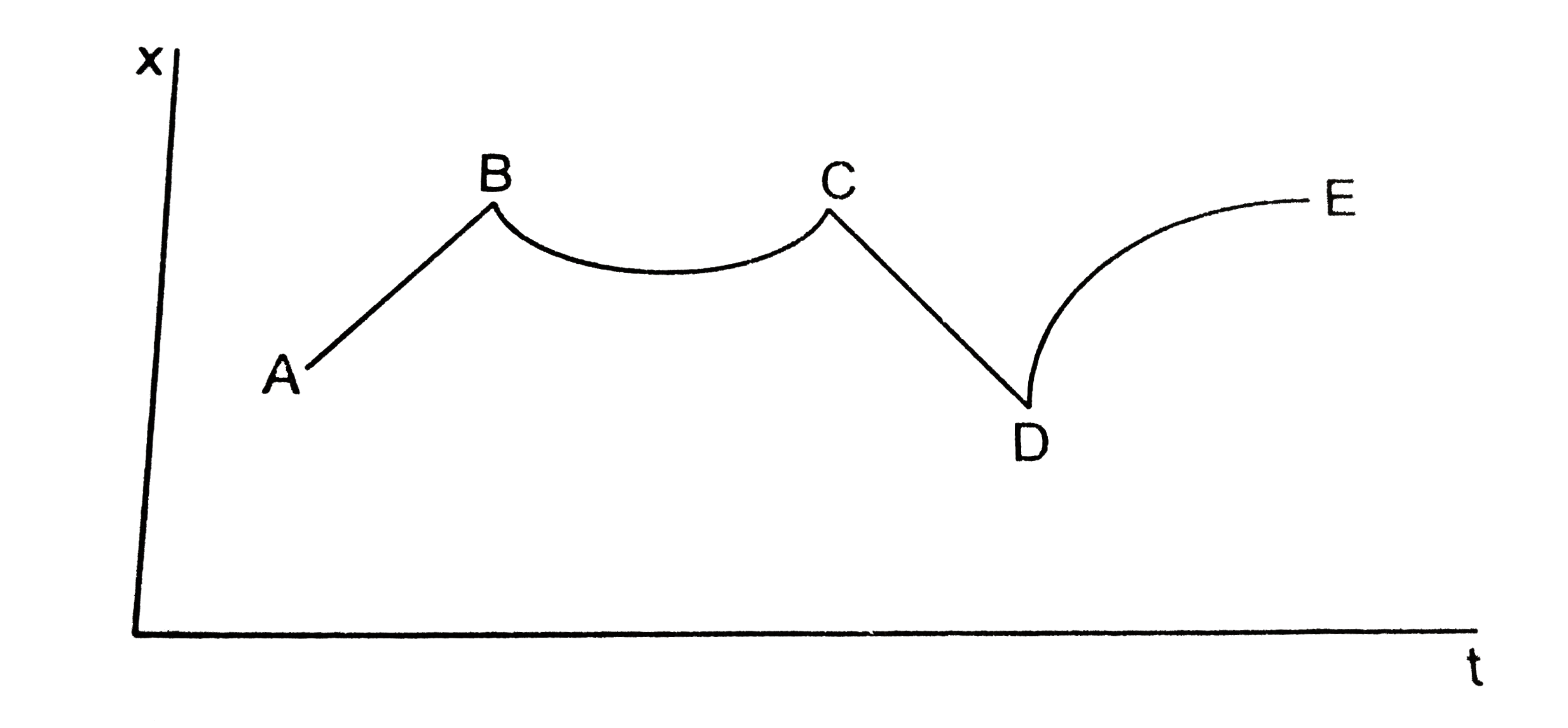Figure shows four situations in which particles of charge +q or -q are fixed in place. In each the particles on the x-axis are equidistant from the y-axis. The particle on the y-axis experiences an electrostatic force F from each of these two particle.
(a) Are the magnitudes F of those force the same or different?
(b ) Is the magnitude of the net force on the particle on the y-axis. equal to grater than, or less than 2F?
(c ) Do the x-components of the two forces add or cancel?
(d) Do the y-components of the force add or cancel?
(e ) Is the direction of the net forcce on the middle particle that of the canceling components or the adding components?
(f) What is the direction of the net force on the middle particle ?
 ,
, 
 ,
, 
 ,
,
(a) It is clear from the diagram that the force F(F1orF2) in case (i) , (ii) ,(iii) and (iv) will be same.
(b) Less than 2F
(c ) Cancel in situations (i) and (ii) and add in situations (iii) and (iv)
(d) Add in situations (i) and (ii) and cancel in situations (iii) and (iv)
(e ) Obvuously, the direction of net force will be that of adding components.
(f) (i) +y, (ii) -y, (iii) +x, (iv) -x
Topper's Solved these Questions
- COULOMB LAW AND ELECTRIC FIELDBOOK - CENGAGE PHYSICS ENGLISHCHAPTER - COULOMB LAW AND ELECTRIC FIELDEXERCISE - Subjective Type
15 Videos
- COULOMB LAW AND ELECTRIC FIELDBOOK - CENGAGE PHYSICS ENGLISHCHAPTER - COULOMB LAW AND ELECTRIC FIELDEXERCISE - Subjective
32 Videos
- COULOMB LAW AND ELECTRIC FIELDBOOK - CENGAGE PHYSICS ENGLISHCHAPTER - COULOMB LAW AND ELECTRIC FIELDEXERCISE - Solved examples
10 Videos
- CENGAGE PHYSICS DPPBOOK - CENGAGE PHYSICS ENGLISHCHAPTER - CENGAGE PHYSICS DPPEXERCISE - subjective type
51 Videos
- ELECTRIC CURRENT & CIRCUITSBOOK - CENGAGE PHYSICS ENGLISHCHAPTER - ELECTRIC CURRENT & CIRCUITSEXERCISE - Kirchhoff s law and simple circuits
15 Videos
Similar Questions
In fig. a central particle of charge −q is surrounded by two circular rings of charged particle of radii r and R, with Rgtr. what is the magnitude and dirction of the net electrostatic force on the central particle due to the other particles?

View SolutionIn fig. a central particle of charge −q is surrounded by two circular rings of charged particle of radii r and R, with Rgtr. what is the magnitude and dirction of the net electrostatic force on the central particle due to the other particles?

View Solution
Knowledge Check
The figure shows four arrangement of three particles of equal masses. Rank the arrangement according to the magnitude of the net gravitational force on the particle m, greatest first.
 A1, tie of 2 and 4, then 3B1,4,3,2C2,3,4,1D4,3,1,2
A1, tie of 2 and 4, then 3B1,4,3,2C2,3,4,1D4,3,1,2Figure shows the displacement of a particle going along the X-axis as a function of time. The force acting on the particle is zero in the region
 AABBBCCCDDDE
AABBBCCCDDDEFigure shows the variation of a force F acting on a particle along x-axis. If the particle begins at rest at x = 0, what is the particle's coordinate when it again has zero speed?
 Ax = 3Bx = 6Cx= 5Dx = 7
Ax = 3Bx = 6Cx= 5Dx = 7
Figure shows the displacement of a particle going along the X-axis as a function of time. The force acting on the particle is zero in the region

View SolutionTwo electrically charged particles, having charges of different magnitudes, when placed at a distance from each other, experience a force of attraction .F. These two particles are put in contact and again placed at the same distance from each other. What is the nature of new force between them?
View SolutionThe force between two identical particles separated by distance d is F . Four such identical particles are placed at the corners of a square of side d. The magnitude of net force on any particle will be
View SolutionA force F=−K(yˆi+xˆj) (where K is a positive constant) acts on a particle moving in the x-y plane. Starting from the origin, the particle is taken along the positive x-axis to the point (a,0), and then parallel to the y-axis to the point (a,a). The total work done by the force F on the particle is
View SolutionA force F=−K(yˆi+xˆj) (where K is a positive constant) acts on a particle moving in the x-y plane. Starting from the origin, the particle is taken along the positive x-axis to the point (a,0), and then parallel to the y-axis to the point (a,a). The total work done by the force F on the particle is
View Solution
